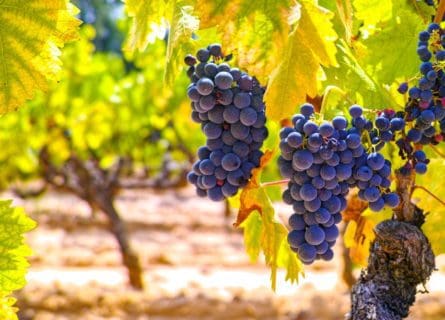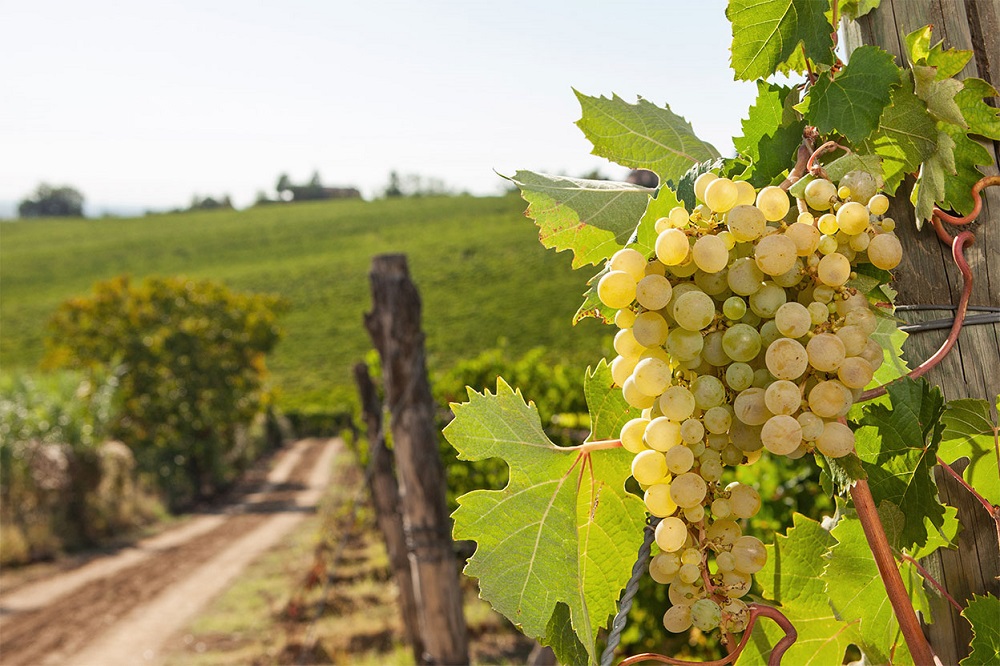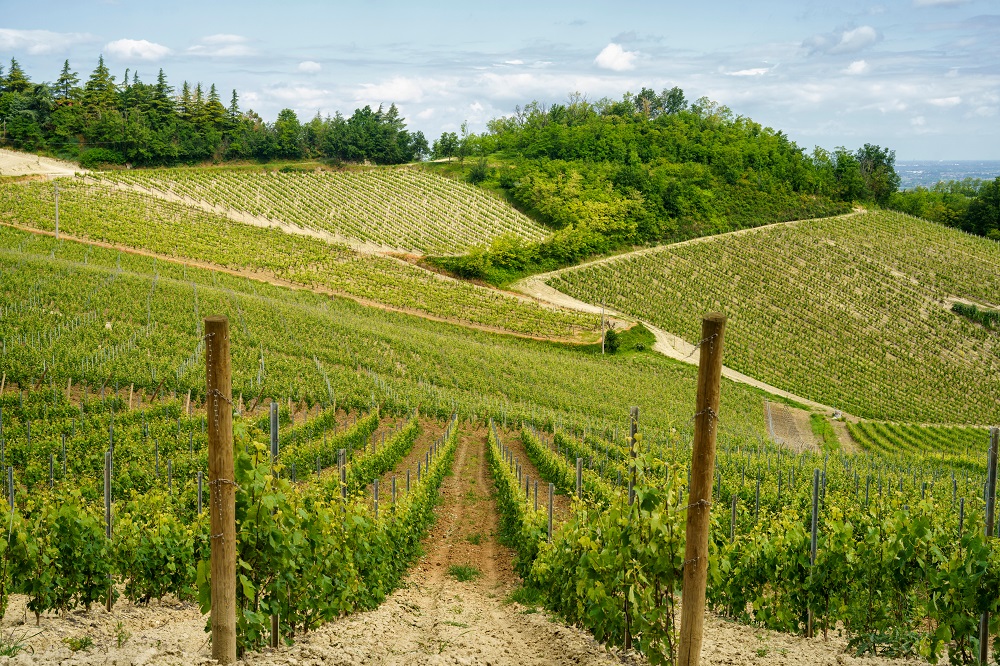
Mourvèdre Grape Variety: A Mover and Shaker
March 27, 2022
Mourvèdre is a red wine grape variety of mysterious origin that's grown around the world, including the Rhone and Provence regions of France.
By: James lawrence / Last updated: February 3, 2025
Estimated reading time: 8 minutes
You can level many legitimate criticisms at Italian wine producers. Or, indeed, at Italian wine. Their labels can be overly complicated due to the myriad of designations and separate appellations recognized under Italian law. Moreover, the country’s obsession with importing French varieties in the 20th century led to a certain homogenization of its wine culture, which is highly regrettable. But, you cannot question the passion of Italy’s finest winegrowers, who are led by their hearts as much as the balance sheet.

Guide to Italian White Wine: Read more
Timorasso is a case in point. In the 1980s, there was no good reason to rescue this rare grape variety from extinction except because it is a vital part of Piedmont’s viticultural heritage. That motivated Walter Massa, a farmer who single-handedly returned Timorasso to greatness. Victory has been snatched from the jaws of defeat—a triumph for authenticity over commercialism. And for the wine lover, there’s another esoteric gem to discover.
Timorasso has been part of the Piedmontese landscape for many centuries – loved and respected by its community of farmers. The region, situated in northwest Italy, is one of the country’s seminal viticultural melting pots, despite the hype over its signature red variety – Nebbiolo. In the pre-Roman era, nomadic Ligurian tribes roamed across northern Italy, seeking shelter in the rain shadow of the Dolomites. However, the ancient Greeks introduced wine growing to Italy during their colonization of several European nations in the 8th century BC. The Romans assumed control of northern Italy several hundred years later, in 220 BC. Oenotrua (“land of vines”) was their apt description for the richly fertile landscape of Italy, used to make a variety of powerful alcoholic ‘brews,’ often seasoned with herbs, sugar, and occasionally sea water!
Yet even after the Romans departed in the 5th century AD, wine growing remained a vital part of Piedmont’s economic and cultural life. Nonetheless, the Dark Ages witnessed much conflict and bloodshed: the Burgundians, Lombards, Ostrogoths, and the Franks all attempted to plant their flag on Italian soil. By the Middle Ages, however, the church had assumed responsibility for cultivating Piedmont’s numerous vines. Indeed, the wineries of the period were cathedrals, churches, and monasteries – Burgundy owes much to the genius of the Cistercian monks, who started the region down the path of terroir demarcation and delineation. In Piedmont, the writer Pietro de Crescentius waxed lyrical about the region’s ethereal wines in his writings published in the 1300s.
Fast forward a century, political stability returned to this corner of northwest Italy. In the 15th century, the Holy Roman Emperor Sigismund created the Duchy of Savoy, encompassing territories in what is now the Cote d’Azur and northern Italy. This political arrangement endured until the 19th century, greatly benefiting Piedmont’s winegrowers. During this period, they were granted access to lucrative markets across Western Europe – the renown of varieties like Nebbiolo and Barbera soared as consumers found alternatives to the near-hegemonic grip of fine French wine.
The 19th century was a time of great social and economic upheaval. Victor Emmanuel II of Savoy became the first monarch to rule a politically united country in the 1860s, despite the resistance of certain states who wished to remain independent. This placed northwest Italy at the heart of European affairs, while trade and commerce with the country’s neighbors flourished in the latter part of the 19th century. Yet one of the biggest advantages to winegrowers was sharing knowledge and expertise. Winemaker Giuseppe Garibaldi helped transform viticulture in the region after several visits to the classified châteaux of Bordeaux.
Sadly, this knowledge could not save French vineyards from the destruction wrought by phylloxera. When botanists shipped plant samples from the US to Europe, little did they realize a poisonous louse had surreptitiously hitched a ride! It destroyed the livelihoods of many growers across Western Europe, albeit the damage to Italian viticulture was not as severe. Eventually, producers came across a solution that involved regrafting European vines onto American rootstock.
This process continued into the early 1900s. By the 1970s, technological innovation and industrialized farming had revolutionized Italy’s wine-growing industry. Unfortunately, this did not bode well for esoteric varieties such as Timorasso. The lure of a quick buck was too attractive to resist: the Italians embarked upon a large-scale internationalization program, removing indigenous grapes from their vineyards and replacing them with French varietals. By the 1980s, it seemed that Timorasso would disappear forever. But, thanks to Walter Massa’s invention, we can now enjoy these fantastic wines – the revived popularity of local grapes in the 2000s has also played its part. Today, the grape is used to make still wine and grappa, a pomace brandy of infamous potency.
Moreover, Timorasso is relatively easy to grow. It produces a decent—but not excessive—yield in most vintages, with thick-skinned berries packed full of aroma and flavor compounds. It is also a tough cookie, with little risk of fungal diseases, even in bad weather.
Although Timorasso lacks the fame of Vermentino and Campanian varieties like Greco, it still packs a punch in the winery. Young wines, particularly if they’ve been aged in wood, offer a cornucopia of ripe flavors: guava, pineapple, vanilla, and lime. Indeed, top-quality Timorasso showcases concentration, depth, and good acidity in one glorious package. There is very little to dislike about the grape.
These innate qualities are harnessed in different ways. Wines made via a cool fermentation in stainless steel will be vibrant and fruit-driven. Barrel maturation and/or skin contact brings a whole new dimension to Timorasso, enhancing the wine’s texture and complexity. In the Colli Tortonesi appellation of Piedmont, the grape is occasionally blended with Moscato Bianco and Vermentino to make a most arresting white style: beautifully fragrant and fresh.

However, one of the most traditional uses for the grape involves making grappa. Love or loathe it; grappa is integral to Piedmont’s gastronomic heritage – the ultimate fiery digestif. Grappa is a type of pomace brandy: spirits made using the solid material (grape skins, pulp, and stems) left over after the berries have been pressed. Historically, the production of grappa was a useful second income stream for wineries in northern Italy, a motivation that remains equally important today. Yet certain growers now cultivate vines exclusively to make aged grappas, the best of which fetch a handsome price. So how is it made?
In a word: distillation. This process involves separating water from alcohol via heat; direct flame is not used to heat the solution, as it would burn the pomace. Instead, water is heated underneath large copper pot stills – the steam is used to warm the liquid and solid mass, causing the alcohol to evaporate. This is the secret behind distillation: alcohol becomes vapor at 82 degrees centigrade, compared to 100 degrees for water. This vapor will rise and collect in a separate still, where it will cool and liquefy. This process is repeated until a pure white spirit emerges – the final alcohol by volume is usually around 40%, although grappa with an ABV of 60 percent is not unheard of. The most expensive labels will be aged in wood for several years before bottling the grappa.
Grappa. There is scarcely a more divisive spirit being made in Italy today – a deluge of badly made and harsh examples turned international consumers against the drink in the 20th century, at a time when alcoholic beverages were falling out of fashion. However, a concerted effort by Italian wine producers and distillers has greatly helped revitalize grappa’s image. The Grappa National Institute, founded in 1996, has done much to promote the beverage as a multi-faceted libation, able to answer the call of gastronomy, post-dinner tipple, and mixology. Of course, that’s a lot of expectation invested in one drink. But we can assure you that grappa is up to the challenge.
Nevertheless, you’ll get no argument from us about the quality of cheap spirits made from pomace. They can be truly awful: as bitter as engine oil and far less palatable. It is their harshness, lack of subtlety, and fierce alcoholic aftertaste that turns us cold. If that has been your grappa experience to date, we implore you to search out Vecchia or Riserva labels. The former is matured for a minimum of 12 months in wood, while the latter is aged for at least 18 months. As a rule, the spirits will be darker in color than younger blends, with a rich bouquet of vanilla, caramel, figs, and lemon peel. As with all good grappas, the finish will be long and spicy – the impressions should linger in the mouth for a long time.
The world’s most talented bartenders are increasingly exploiting these superlative pomace brandies: Grappa Fashioned has become a major hit with barflies in New York. It takes the classic Old Fashioned recipe and revitalizes it with the flavors of Italy – the bourbon is replaced with aged grappa, mixed with bitters, Marsala, and black tea. It’s an exquisite drink and the perfect pick-me-up.
However, aficionados will tell you that the finest grappas should never be ‘adulterated’ with other ingredients. Berta, Bocchino, and Distilleria Levi Serafino produce spirits aged for over a decade before release – they represent the pinnacle of pomace brandy. So, if you fancy giving Cognac the occasional night off, you know where to turn.
If you would like us to customize an exclusive luxury tour, contact us and let us know your travel plans. We offer luxury food and wine tours for private groups of a minimum two guests. In addition, all of our private, chauffeured tours are available year-round upon request.

